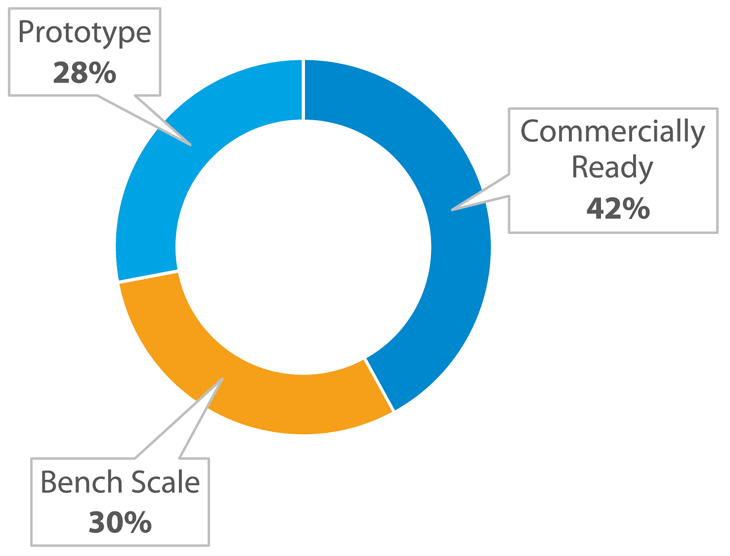Innovation and Entrepreneurship Center Newsletter: Winter 2021
This story was originally published in the Winter 2021 edition of the Innovation and Entrepreneurship Newsletter.
Good News: The Cleantech Ecosystem is Healthy
We here at the Innovation and Entrepreneurship Center are lucky to have an eagle’s-eye view of the cleantech landscape.
We can recognize trends, assess future needs, and share our collective intelligence with the broader community.
To that end, over the past year we have been conducting an assessment of the cleantech landscape, supported by the Wells Fargo Innovation Incubator (IN²) program. In 2020, we gathered data on cleantech startups in the United States and the community of incubators and accelerators that support them.
We hoped to answer some pressing questions posed to us by our partners:
- What is the percentage of companies in each stage of development?
- What do the demographics of the companies in the network look like?
- What’s the role of national labs and universities in the overall picture?
- What kinds of technologies are coming through the pipeline?

Through a collaborative research effort involving our Channel Partners, we surveyed
1,363 cleantech innovators and 49 of the organizations that serve them. We have compiled
the information in a white paper available on the IN² website: “Perspectives from the IN² Network: State of the Cleantech Landscape.”
The good news: The surveys found that innovation in cleantech continues, with new
companies entering the ecosystem at a steady rate over the last few years. There is
currently a healthy distribution of companies by stage, with 376 or about 30 percent
at bench scale, 369 or about 30 percent at prototype scale, and 500 or about 40 percent
commercially ready.
Future Directions for Improvement
The research also included a gap analysis to dive into our ecosystems’ future needs.
In order to accelerate clean tech startups’ paths to market, the report argues for:
- More entrepreneurial training
- Help with pilots and demonstration projects, access to patient capital
- Better matches between services and the companies that need them.
The report also lays out a scheme for measuring the health of startups along their paths to commercialization.
We hope this research will be of benefit to the community and hopefully a jumping-off point for broader discussion.
Our cleantech landscape analysis on the IN² website shows a nearly equal distribution of companies by stage of development.
Share

